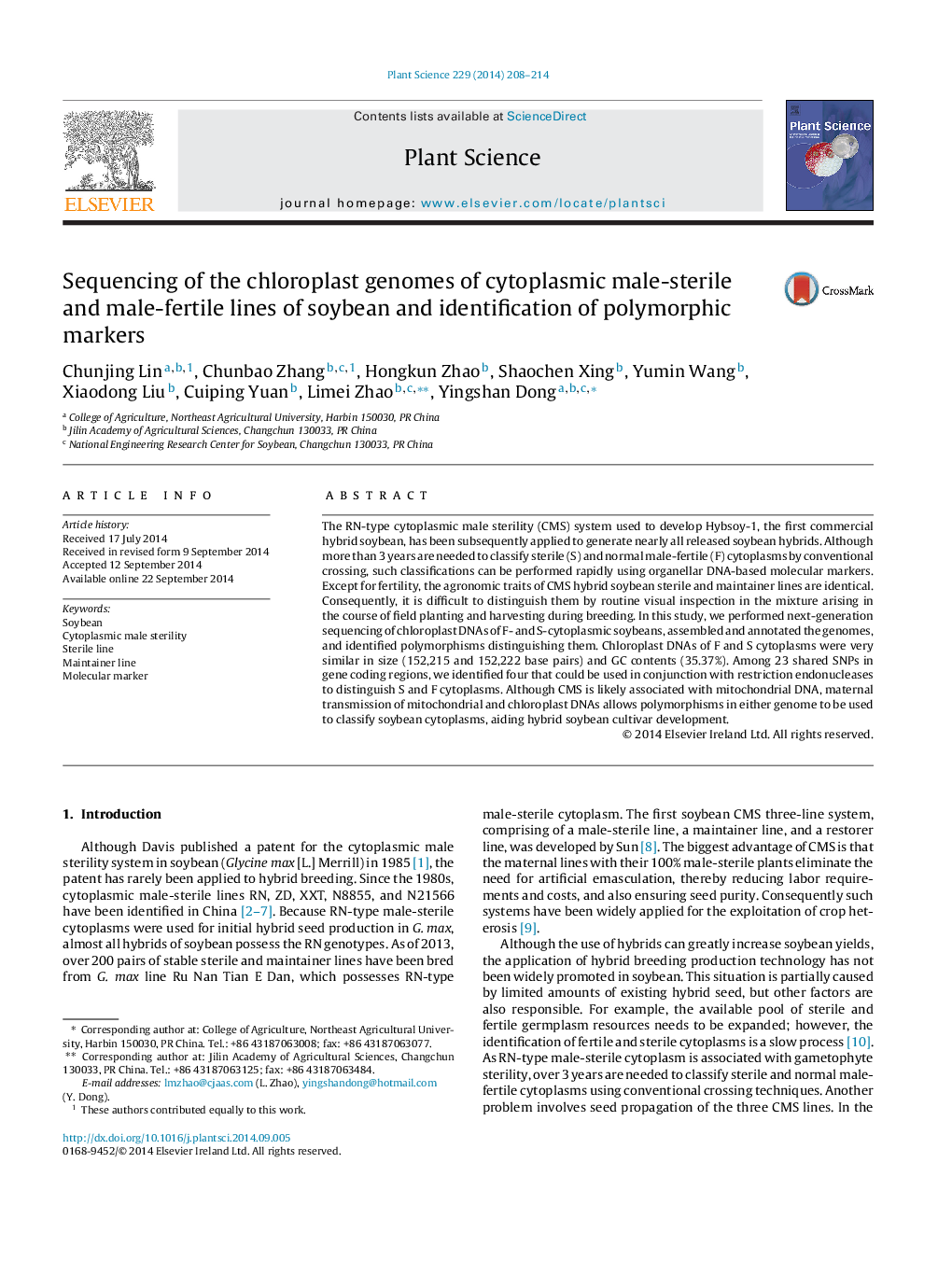| Article ID | Journal | Published Year | Pages | File Type |
|---|---|---|---|---|
| 8358071 | Plant Science | 2014 | 7 Pages |
Abstract
The RN-type cytoplasmic male sterility (CMS) system used to develop Hybsoy-1, the first commercial hybrid soybean, has been subsequently applied to generate nearly all released soybean hybrids. Although more than 3 years are needed to classify sterile (S) and normal male-fertile (F) cytoplasms by conventional crossing, such classifications can be performed rapidly using organellar DNA-based molecular markers. Except for fertility, the agronomic traits of CMS hybrid soybean sterile and maintainer lines are identical. Consequently, it is difficult to distinguish them by routine visual inspection in the mixture arising in the course of field planting and harvesting during breeding. In this study, we performed next-generation sequencing of chloroplast DNAs of F- and S-cytoplasmic soybeans, assembled and annotated the genomes, and identified polymorphisms distinguishing them. Chloroplast DNAs of F and S cytoplasms were very similar in size (152,215 and 152,222 base pairs) and GC contents (35.37%). Among 23 shared SNPs in gene coding regions, we identified four that could be used in conjunction with restriction endonucleases to distinguish S and F cytoplasms. Although CMS is likely associated with mitochondrial DNA, maternal transmission of mitochondrial and chloroplast DNAs allows polymorphisms in either genome to be used to classify soybean cytoplasms, aiding hybrid soybean cultivar development.
Related Topics
Life Sciences
Agricultural and Biological Sciences
Plant Science
Authors
Chunjing Lin, Chunbao Zhang, Hongkun Zhao, Shaochen Xing, Yumin Wang, Xiaodong Liu, Cuiping Yuan, Limei Zhao, Yingshan Dong,
